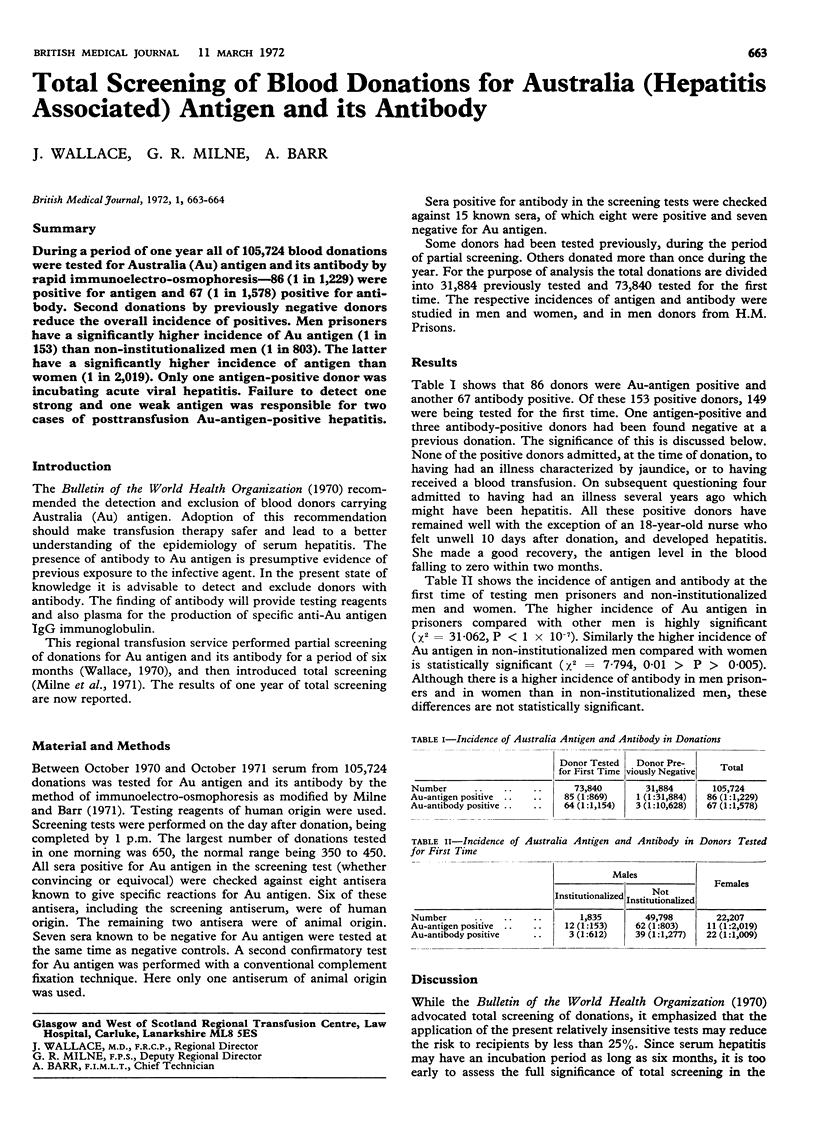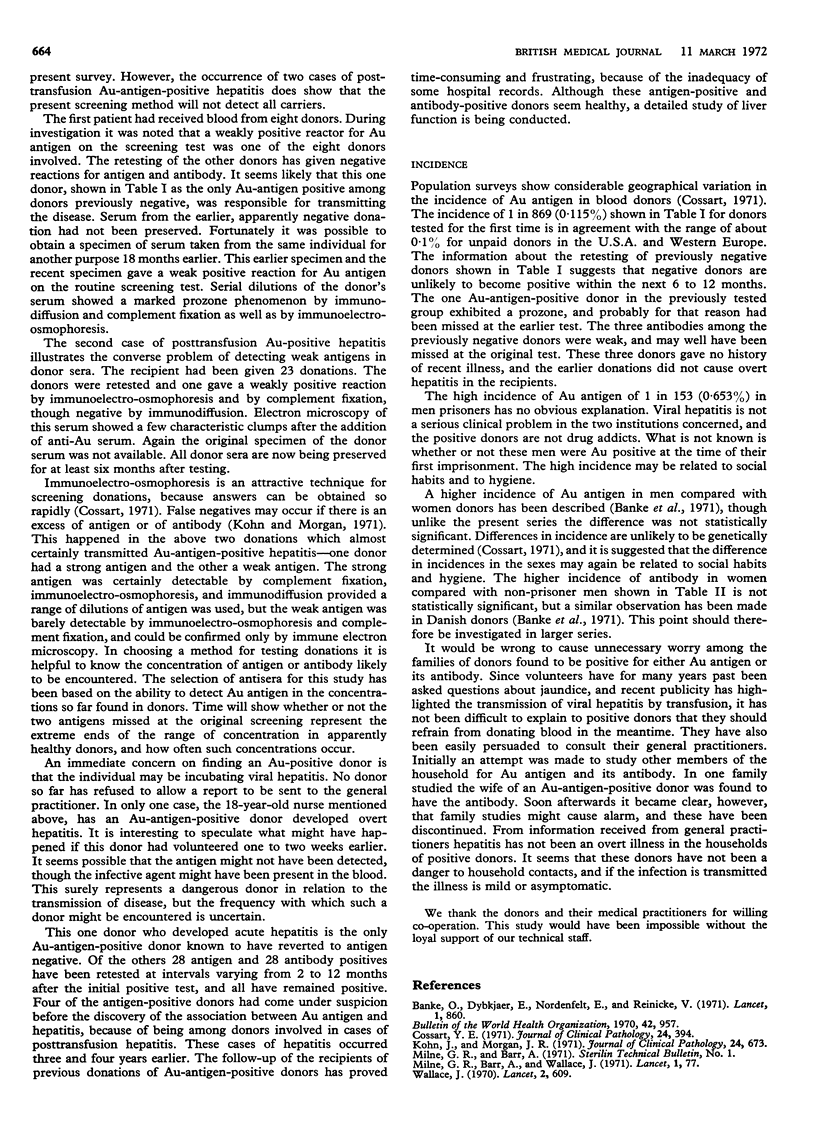Abstract
During a period of one year all of 105,724 blood donations were tested for Australia (Au) antigen and its antibody by rapid immunoelectro-osmophoresis—86 (1 in 1,229) were positive for antigen and 67 (1 in 1,578) positive for antibody. Second donations by previously negative donors reduce the overall incidence of positives. Men prisoners have a significantly higher incidence of Au antigen (1 in 153) than non-institutionalized men (1 in 803). The latter have a significantly higher incidence of antigen than women (1 in 2,019). Only one antigen-positive donor was incubating acute viral hepatitis. Failure to detect one strong and one weak antigen was responsible for two cases of posttransfusion Au-antigen-positive hepatitis.
Full text
PDF

Selected References
These references are in PubMed. This may not be the complete list of references from this article.
- Banke O., Dybkjaer E., Nordenfelt E., Reinicke V. Australia antigen and antibody in 10,000 Danish blood-donors. Lancet. 1971 Apr 24;1(7704):860–861. doi: 10.1016/s0140-6736(71)91532-7. [DOI] [PubMed] [Google Scholar]
- Kohn J., Morgan J. R. Pitfalls of Australia antigen detection and screening. J Clin Pathol. 1971 Oct;24(7):673–674. doi: 10.1136/jcp.24.7.673. [DOI] [PMC free article] [PubMed] [Google Scholar]
- Milne G. R., Barr A., Wallace J. Total screening of blood donations for H.A.A. and anti-H.A.A. Lancet. 1971 Jan 9;1(7689):77–77. doi: 10.1016/s0140-6736(71)90794-x. [DOI] [PubMed] [Google Scholar]
- Wallace J. Australia antigen and hepatitis. Lancet. 1970 Sep 19;2(7673):609–609. [PubMed] [Google Scholar]


